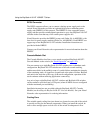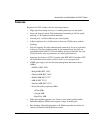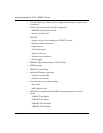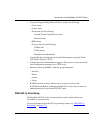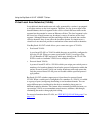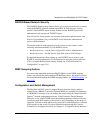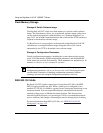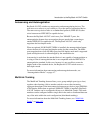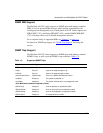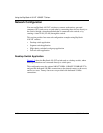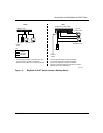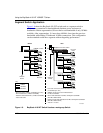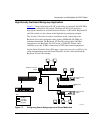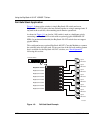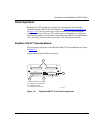
Using the BayStack 410-24T 10BASE-T Switch
1-16
309985-A Rev 00
Port Mirroring
The port mirroring feature (sometimes referred to as conversation steering) allows
a user to designate a single switch port as a traffic monitor for up to two specified
ports or two media access control (MAC) addresses. You can specify Port-Based
monitoring, where all traffic on specified ports is monitored, or Address-Based
monitoring, where traffic between specified MAC addresses is monitored. You
can attach a probe device (such as a Nortel Networks StackProbe, or equivalent) to
the designated monitor port.
For more information about the port mirroring feature, see “Port Mirroring
(Conversation Steering)” on page 1-76.
BootP Automatic IP Configuration/MAC Address
The BayStack 410-24T switch has a unique 48-bit hardware address, or MAC
address, that is printed on a label on the back panel. You use this MAC address
when you configure the network BootP server to recognize the BayStack 410-24T
switch BootP requests. A properly configured BootP server enables the switch to
automatically learn its assigned IP address, subnet mask, IP address of the default
router (default gateway), and software image file name.
When the switch is participating in a stack configuration, a Stack MAC address is
automatically assigned during the stack initialization. The base unit’s MAC
address, with a software offset, is used for the Stack MAC address.
For example, if the base unit’s MAC address is:
00-00-82-99-44-00
and the Stack software offset is:
1F
then the Stack MAC address becomes:
00-00-82-99-44-1F
If another unit in the stack is assigned as the base unit, the MAC address of the
new base unit (with offset) now applies to the stack configuration. The original
stack IP address still applies to the new base unit.
For an example of a BootP configuration file, see Appendix F, “Sample BootP
Configuration File.”



